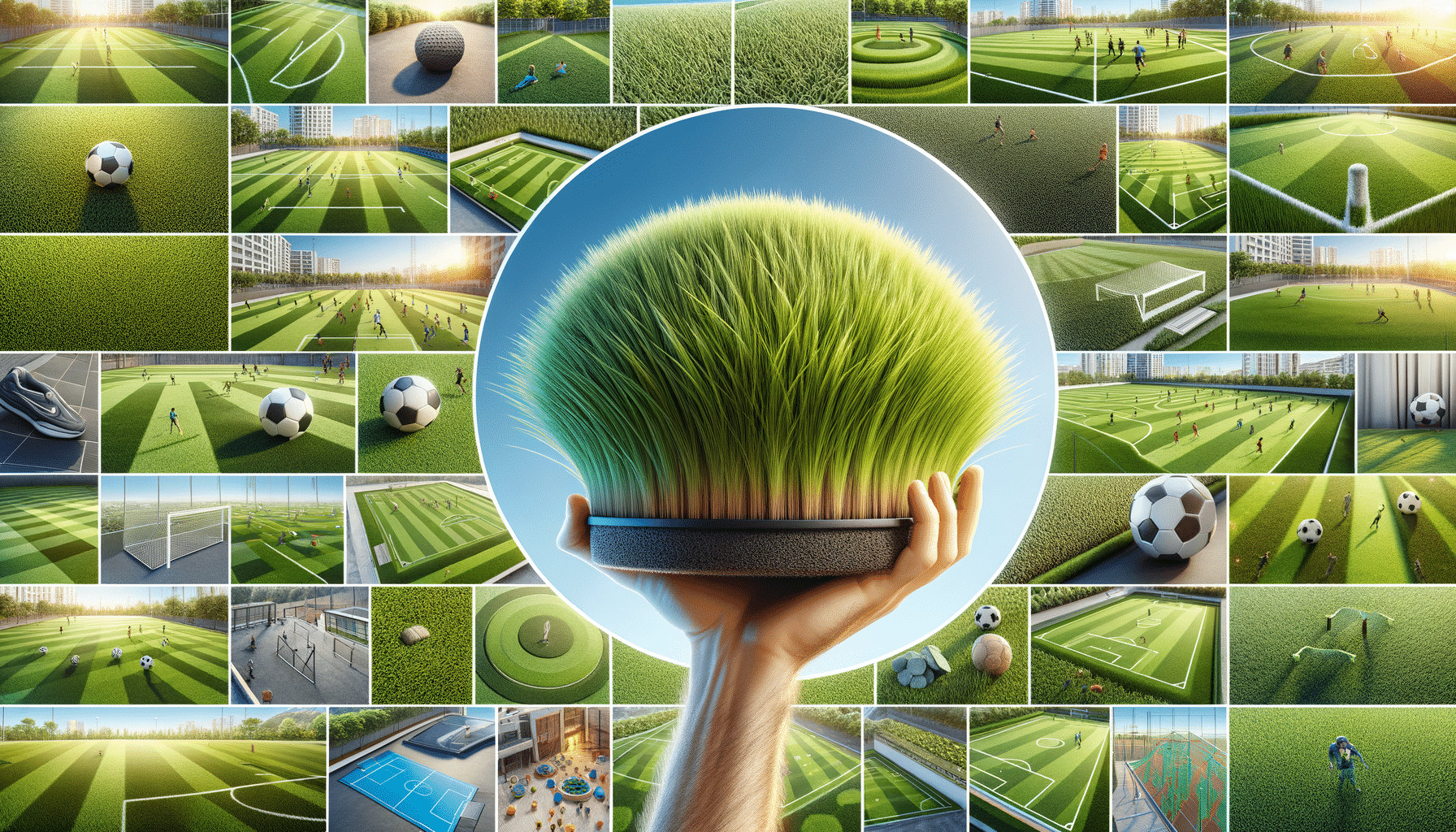Exploring the World of Artificial Grass: A Comprehensive Guide
Choosing the right artificial grass depends on usage, durability, and appearance. Consider pile height, density, and material to ensure a natural look and long-lasting performance.

Understanding Artificial Grass: An Overview
Artificial grass, also known as synthetic turf, has gained popularity in recent years as a versatile and low-maintenance alternative to natural grass. Originally developed for sports fields, it is now widely used in residential and commercial landscapes. This section explores the history and development of artificial grass, highlighting its transformation from a niche product to a mainstream landscaping solution.
The first artificial grass, known as AstroTurf, was introduced in the 1960s for use in sports stadiums. Over the years, advancements in technology have improved the quality and appearance of synthetic turf, making it more realistic and durable. Today, artificial grass is made from polyethylene, polypropylene, or nylon, with each material offering unique benefits.
Artificial grass is favored for its ability to withstand heavy use and harsh weather conditions, providing a lush, green appearance year-round. It is particularly popular in areas with water restrictions, as it requires no watering or mowing. Additionally, artificial grass is an eco-friendly option, as it eliminates the need for pesticides and fertilizers.
In summary, artificial grass has evolved significantly since its inception, offering a practical and aesthetically pleasing solution for a variety of applications. Its growing popularity can be attributed to its durability, low maintenance requirements, and environmental benefits.
Advantages and Disadvantages of Artificial Grass
Artificial grass offers numerous advantages, making it an attractive option for many homeowners and businesses. However, it is essential to consider the potential drawbacks before deciding if synthetic turf is the right choice for your needs. This section provides a balanced view of the pros and cons associated with artificial grass.
Advantages of artificial grass include:
- Low maintenance: No need for mowing, watering, or fertilizing.
- Durability: Resistant to heavy foot traffic, weather, and pests.
- Consistent appearance: Remains green and lush throughout the year.
- Water conservation: Ideal for areas with water restrictions.
- Eco-friendly: Reduces the need for chemicals and lawn equipment.
Despite its benefits, artificial grass also has some disadvantages:
- Initial cost: Installation can be expensive compared to natural grass.
- Heat retention: Synthetic turf can become hot in direct sunlight.
- Environmental impact: Production and disposal can contribute to pollution.
- Limited lifespan: Typically lasts 15-20 years before needing replacement.
In conclusion, while artificial grass offers numerous benefits, it is essential to weigh these against the potential drawbacks. Understanding these factors will help you make an informed decision about whether synthetic turf is the right choice for your property.
Types of Artificial Grass: Choosing the Right One
When selecting artificial grass, it is crucial to consider factors such as usage, appearance, and budget. This section discusses the different types of synthetic turf available and provides guidance on choosing the right option for your needs.
Artificial grass can be categorized by the materials used in its construction:
- Polyethylene: Known for its soft texture and realistic appearance, polyethylene is a popular choice for residential lawns and play areas.
- Polypropylene: More affordable than polyethylene, polypropylene is suitable for low-traffic areas but may not be as durable.
- Nylon: The most robust and resilient option, nylon is ideal for high-traffic areas and sports fields but typically comes at a higher cost.
When choosing artificial grass, consider the following factors:
- Pile height: Longer blades provide a more natural look, while shorter blades are easier to maintain.
- Density: Higher density turf offers a more luxurious feel and better durability.
- Color: Synthetic turf is available in various shades of green, allowing you to select a color that complements your landscape.
By carefully evaluating these factors, you can select the artificial grass that best meets your needs, ensuring a beautiful and functional addition to your outdoor space.
Installation and Maintenance of Artificial Grass
Proper installation and maintenance are crucial to maximizing the lifespan and appearance of artificial grass. This section provides an overview of the installation process and offers tips for maintaining synthetic turf to ensure it remains in top condition.
The installation process typically involves the following steps:
- Site preparation: Remove existing vegetation and level the ground.
- Base construction: Install a layer of crushed stone or gravel to provide drainage and stability.
- Turf installation: Lay the artificial grass, ensuring seams are well-hidden and edges are secured.
- Infill application: Apply sand or rubber granules to help maintain the turf’s shape and provide cushioning.
Once installed, artificial grass requires minimal maintenance. Regular upkeep includes:
- Brushing: Use a stiff broom to lift the blades and remove debris.
- Rinsing: Occasionally hose down the turf to remove dust and dirt.
- Spot cleaning: Address spills and stains promptly with mild soap and water.
By following these maintenance tips, you can keep your artificial grass looking vibrant and extend its lifespan, ensuring years of enjoyment.
Environmental Impact and Sustainability of Artificial Grass
As concerns about environmental sustainability grow, it is essential to consider the ecological impact of artificial grass. This section examines the environmental aspects of synthetic turf, highlighting both its benefits and potential drawbacks.
Artificial grass offers several environmental advantages:
- Water conservation: Reduces water usage, making it an ideal choice for drought-prone areas.
- Reduction of chemicals: Eliminates the need for pesticides and fertilizers, decreasing chemical runoff.
- Decreased emissions: Reduces reliance on gas-powered lawn equipment, lowering carbon emissions.
However, there are also environmental concerns associated with artificial grass:
- Production and disposal: Manufacturing synthetic turf can contribute to pollution, and disposal of old turf can be challenging.
- Heat island effect: Artificial grass can absorb and retain heat, potentially impacting local microclimates.
In conclusion, while artificial grass offers several environmental benefits, it is essential to consider its potential drawbacks. By weighing these factors, you can make an informed decision about whether synthetic turf is the right choice for your landscape.